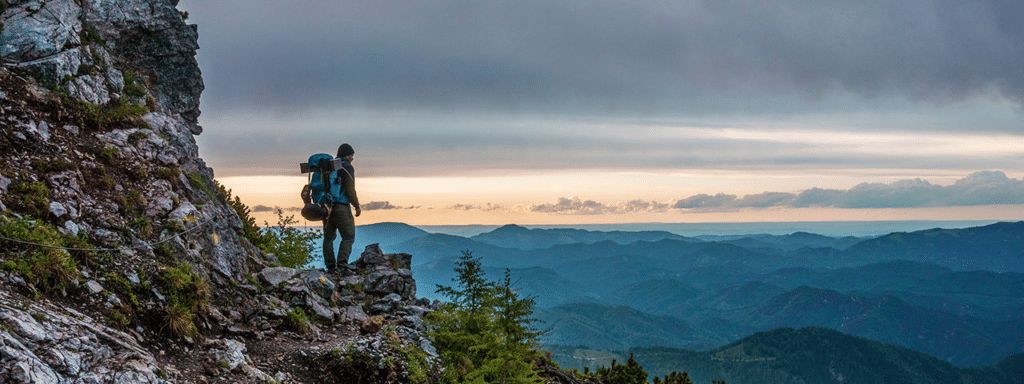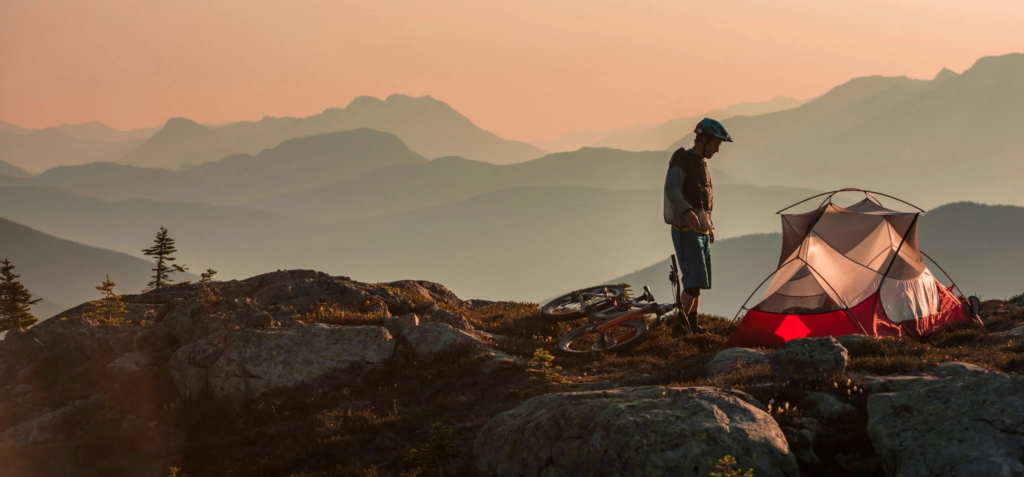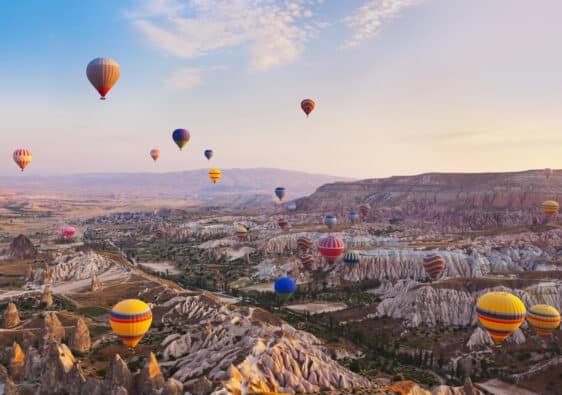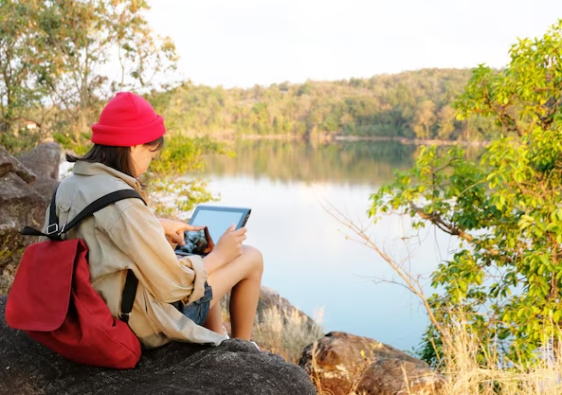The world is full of breathtaking landscapes, thrilling activities, and cultures waiting to be discovered. If you have an adventurous spirit and a love for new experiences, adventure travel could be the perfect way to explore the world. But before you embark on your ultimate adventure, there are a few things to consider. Adventure travel isn’t just about reaching a destination; it’s about embracing the journey, overcoming challenges, and immersing yourself in the unknown. Are you ready for the ultimate adventure travel experience?
In this article, we’ll take a deep dive into what adventure travel is, why it’s so popular, and how you can prepare for your own once-in-a-lifetime journey. We’ll also tackle some of the most common questions people ask about adventure travel, so you’ll feel more prepared and inspired to start your adventure.
Key Takeaways
- Adventure travel is about stepping outside your comfort zone and embracing new challenges.
- There are various types of adventure travel experiences, from hiking to extreme sports to cultural exploration.
- Proper preparation is key to ensuring your adventure is safe and enjoyable.
- Adventure travel offers life-changing experiences, building lasting memories and connecting with nature and cultures.
What is Adventure Travel?

Adventure travel is a type of tourism that involves physical activity, exploration, and a sense of excitement. It’s not just about lounging on a beach or visiting famous landmarks; it’s about stepping outside of your comfort zone and engaging in activities that push you physically, mentally, or emotionally.
Adventure travel encompasses a wide range of activities, including:
- Hiking and trekking through remote wilderness areas.
- Rock climbing and mountaineering.
- White-water rafting on intense rivers.
- Wildlife safaris in some of the most remote parts of the world.
- Diving and exploring underwater ecosystems.
- Cultural exploration in off-the-beaten-path destinations.
Whether you’re scaling a mountain, trekking through a rainforest, or engaging with a remote community, adventure travel allows you to explore the world in a way that no ordinary vacation can offer.
Why is Adventure Travel So Popular?
Adventure travel has seen a rise in popularity in recent years, and for good reason. Here are some key factors that contribute to the growing interest in this type of travel:
1. A Desire for Authentic Experiences
Many travelers are seeking more than just a snapshot of a famous landmark. They want to dive deeper into the culture, people, and environment of a destination. Adventure travel offers a chance to engage with local communities in meaningful ways while also exploring the natural beauty of the land.
2. Escaping the Routine
In today’s fast-paced world, people are looking for ways to break away from the monotony of everyday life. Adventure travel provides an opportunity to disconnect from the usual stresses, whether it’s work, technology, or just the day-to-day routine. It’s a way to refresh and rejuvenate your mind and body while experiencing something new.
3. Physical and Mental Challenge
For many, adventure travel represents an opportunity to push their physical and mental boundaries. Whether it’s completing a challenging trek, participating in a triathlon, or simply navigating through unfamiliar environments, the sense of accomplishment and self-growth is a huge draw.
4. Building Lasting Memories
Adventure travel often leads to once-in-a-lifetime experiences. The memories of hiking to the top of a volcano, camping under the stars in the desert, or witnessing wildlife in their natural habitat become stories you’ll cherish forever.
5. A Chance to Connect with Nature
In a world dominated by cities and technology, adventure travel offers a rare opportunity to reconnect with nature. It’s a chance to witness the awe-inspiring beauty of the natural world, from pristine beaches to vast mountains and lush forests.
6. Social and Solo Options
Adventure travel is highly versatile and can be tailored to different types of travelers. Whether you want to join a group tour, meet other like-minded people, or venture out on your own, there are options for everyone. Solo travelers can find peace and solitude in remote locations, while group travelers can bond with others over shared challenges.
Types of Adventure Travel Experiences
Not all adventure travel experiences are the same, and the type of adventure you choose depends on your interests, fitness level, and comfort zone. Here are some of the most popular types of adventure travel:
1. Trekking and Hiking Adventures
Trekking is one of the most popular forms of adventure travel, and for good reason. It allows you to explore natural landscapes while challenging yourself physically. Whether it’s the challenging Annapurna Circuit in Nepal or the Inca Trail in Peru, hiking offers both natural beauty and a sense of accomplishment.
Popular Trekking Destinations:
- Everest Base Camp Trek (Nepal)
- Mount Kilimanjaro (Tanzania)
- Patagonia (Argentina/Chile)
- Inca Trail (Peru)
2. Extreme Sports Adventures
For thrill-seekers, adventure travel often includes engaging in extreme sports. From bungee jumping to paragliding, and even base jumping, extreme sports are about testing your limits and embracing the adrenaline rush.
Popular Extreme Sports:
- Bungee Jumping (New Zealand)
- Paragliding (Switzerland)
- Skydiving (Dubai)
- Caving (Carlsbad Caverns, USA)
3. Wildlife Safaris and Nature Encounters
If you love animals and nature, a wildlife safari is a must-do adventure. There’s something magical about spotting lions, elephants, and rhinos in the wild. These safaris allow you to connect with nature and witness animals in their natural habitats.
Popular Wildlife Safari Destinations:
- Kruger National Park (South Africa)
- Masai Mara (Kenya)
- Galapagos Islands (Ecuador)
- Ranthambore National Park (India)
4. Water-Based Adventures
For those who love the water, adventure travel includes activities like white-water rafting, scuba diving, and kayaking. Exploring the ocean’s depths through diving or braving the rapids in a raft offers an exhilarating connection with nature’s forces.
Popular Water Adventures:
- White-water Rafting (Colorado River, USA)
- Scuba Diving (Great Barrier Reef, Australia)
- Kayaking (Norway’s Fjords)
- Snorkeling (Maldives)
5. Cultural Exploration Adventures
Adventure travel isn’t just about physical challenges; it can also involve immersing yourself in different cultures. Traveling to remote villages, learning local traditions, and even volunteering can be just as enriching as scaling mountains or diving in exotic locations.
Cultural Exploration Destinations:
- Machu Picchu (Peru)
- Bhutan (Himalayas)
- Petra (Jordan)
- Cambodia (Angkor Wat)
How to Prepare for the Ultimate Adventure Travel Experience

Are you wondering how to get ready for your adventure? Preparation is key to making sure your experience is memorable and, most importantly, safe. Here are some tips to help you plan:
1. Research Your Destination
Before you embark on any adventure, it’s crucial to research your destination thoroughly. Understand the geography, weather conditions, and any local customs or cultural nuances. Learn about the challenges you may face, such as altitude sickness, wildlife encounters, or language barriers.
2. Get in Shape
Adventure travel often involves physical activity. Whether it’s hiking, cycling, or rafting, you’ll want to make sure you’re in good physical condition. Start training ahead of time by doing cardio, strength training, and flexibility exercises to build stamina and endurance.
3. Pack Smart
Packing light but efficiently is essential for adventure travel. Choose versatile clothing and equipment that is both durable and practical for the specific activities you plan to do. Don’t forget essentials like a good pair of hiking boots, a reliable backpack, and weather-appropriate clothing.
4. Understand the Risks
Adventure travel often involves taking risks, and it’s important to understand what those risks are. Consider travel insurance that covers unexpected events such as medical emergencies or trip cancellations. Know the safety procedures for the activities you plan to engage in and don’t take unnecessary risks.
5. Get Proper Gear
Having the right gear can make or break your adventure. Depending on the activities you plan to do, invest in quality gear such as trekking poles, a water filter, a good headlamp, or a climbing harness.
6. Respect Local Culture and Environment
One of the most important aspects of adventure travel is showing respect for the local environment and culture. Be mindful of your impact on the ecosystem and local communities, and always leave no trace.
Certainly! Here are a few more detailed article topics related to adventure travel that could interest readers:
How to Plan the Ultimate Adventure Travel Trip
Planning the ultimate adventure travel trip requires more than just booking a flight and packing a suitcase. It involves careful preparation, thoughtful research, and a sense of excitement for the journey ahead. Whether you’re trekking through the Andes, diving in the Great Barrier Reef, or scaling the peaks of the Himalayas, the key to a successful adventure is a well-thought-out plan. This guide will walk you through everything you need to know to create a seamless and thrilling adventure trip.
Key Steps to Planning Adventure Travel
When planning your adventure travel trip, the first step is to assess what kind of adventure you’re after. Are you looking for extreme sports or a more relaxed cultural exploration? Once you’ve narrowed down your interests, start researching destinations that offer the experiences you want. Make sure to understand the physical requirements of the activity and select a destination that matches your fitness level.
Next, consider the best times to visit based on climate and local conditions. Some adventures, like trekking, may only be possible in certain seasons due to weather conditions. Also, explore available travel packages and find trustworthy guides or local companies that specialize in adventure tours.
Don’t forget to secure travel insurance, particularly for more risky activities, and ensure you have all the necessary documentation, such as visas, permits, or vaccinations.
Packing for Adventure Travel
Packing for an adventure trip requires careful consideration of the specific activities you’ll be engaging in. Essential gear includes durable hiking boots, weather-appropriate clothing, a reliable backpack, a headlamp, and a multi-tool. Also, ensure you pack first-aid supplies, a water filtration system, and snacks to keep your energy up. Depending on the location, additional equipment like climbing gear, diving masks, or a tent might be necessary.
Don’t pack too much, as excess luggage can slow you down. Instead, pack lightweight, multi-purpose items that are easy to carry and will support your physical activity during the adventure.
Preparing Physically and Mentally for Adventure Travel
One of the most important parts of preparing for an adventure trip is getting your body ready for the physical challenges ahead. Depending on your adventure, this might include building stamina, strength, or flexibility. Engage in cardiovascular exercises, hiking, cycling, or strength training to improve your endurance and fitness level.
Additionally, mental preparation is just as important as physical preparation. Adventure travel often involves unexpected challenges, so cultivating a positive and resilient mindset can make all the difference when faced with obstacles. Be ready to step outside your comfort zone, try new things, and embrace the unknown.
Adventure Travel for Beginners: How to Start Your Journey

Starting your adventure travel journey can seem daunting, especially if you’re new to the concept of stepping out into the wild or trying physically demanding activities. However, adventure travel is for everyone, regardless of experience level. For beginners, the key to success is starting small, understanding your interests, and gradually working your way up to more challenging adventures.
What is Adventure Travel for Beginners?
Adventure travel for beginners is all about exploring new destinations and activities while keeping your comfort level in mind. It’s an opportunity to try something new, like hiking through a national park or taking a cooking class in a foreign country, without overwhelming yourself.
The first step is identifying what excites you. Do you prefer trekking through nature, cultural exchanges, or engaging in light sports like kayaking or cycling? Once you determine your interests, research destinations that offer activities for beginners. You might not be ready to summit Everest yet, but there are plenty of less challenging hikes, safaris, and scenic bike rides to choose from.
Starting Small: Day Trips and Weekend Adventures
If you’re nervous about a long, international trip, consider starting with a local or regional adventure. Weekend getaways that involve outdoor exploration are great for beginners. Day trips can introduce you to adventure activities like hiking, kayaking, or biking without the commitment of a multi-week trek.
Visiting national parks or nature reserves can give you a taste of adventure while allowing you to stay close to home. It’s also an excellent opportunity to practice some of the skills you’ll need for longer excursions, such as navigating terrain, managing gear, and pacing yourself.
Group Adventures and Tours
Joining an adventure group tour is a perfect way for beginners to get started. These tours are designed for individuals with little to no experience, and they are typically led by experienced guides who provide safety instructions and support. Whether it’s a group trek, a rafting trip, or a cultural exploration, group tours allow you to meet new people while tackling challenges together.
Group tours also come with the added benefit of safety and local knowledge. Guides can help you navigate unfamiliar terrain and provide advice on how to handle unexpected situations. By starting with a guided experience, you can build your confidence before venturing off on your own.
Gear and Preparation
When you’re just starting out, the gear can seem overwhelming. However, you don’t need to invest in expensive equipment for your first adventure. For most beginner trips, you can get by with basic gear. Comfortable hiking boots, weather-appropriate clothing, and a backpack for carrying essentials are a good start.
Before setting out, make sure you’re familiar with the equipment you’ll be using, whether it’s a bike, raft, or trekking poles. Read up on how to use them properly, and always prioritize safety. A basic first-aid kit, sunscreen, and a water bottle are also essential, no matter the adventure.
The Best Adventure Travel Destinations Around the World
Adventure travel offers the opportunity to explore some of the world’s most awe-inspiring landscapes, encounter diverse wildlife, and engage in physically demanding activities. Whether you’re seeking mountain peaks, remote jungles, or vast oceans, there’s an adventure destination for every type of traveler. In this article, we’ll take a closer look at some of the best adventure travel destinations around the globe.
Top Adventure Travel Destinations
Patagonia (Argentina/Chile)
Patagonia is a paradise for outdoor enthusiasts. Located at the southern tip of South America, this region offers rugged mountains, stunning glaciers, and vast plains. Activities like hiking, trekking, and wildlife spotting are plentiful in Patagonia’s many national parks, including Torres del Paine in Chile and Los Glaciares in Argentina.
Whether you’re looking to climb Mount Fitz Roy or explore the massive Perito Moreno Glacier, Patagonia offers some of the most breathtaking scenery on Earth. This remote area is ideal for those seeking an immersive outdoor adventure.
The Canadian Rockies (Canada)
For adventurers seeking a combination of stunning landscapes and outdoor activities, the Canadian Rockies are hard to beat. This mountain range offers everything from alpine hiking and mountaineering to skiing and ice climbing.
Banff National Park and Jasper National Park are two of the most famous spots in the Rockies, offering scenic drives, crystal-clear lakes, and rugged terrain to explore. If you’re a fan of wildlife, you’ll also have the chance to spot bears, elk, and other wildlife in their natural habitats.
Costa Rica
Costa Rica is a dream destination for adventure lovers, thanks to its tropical rainforests, volcanoes, and pristine coastlines. From zip-lining through the jungle to surfing on the Pacific coast, there’s no shortage of adrenaline-pumping activities to enjoy.
Nature enthusiasts can explore Costa Rica’s many national parks, such as Manuel Antonio and Arenal Volcano National Park, where wildlife sightings are guaranteed. Additionally, Costa Rica’s unique combination of ecosystems makes it a fantastic destination for birdwatching and eco-tourism.
New Zealand
Known as the adventure capital of the world, New Zealand is famous for its thrilling activities. Whether you’re bungee jumping in Queenstown, skydiving over Lake Taupo, or hiking the famous Milford Track, New Zealand provides an abundance of outdoor pursuits.
The country’s diverse landscapes — from rolling hills and mountains to glaciers and beaches — make it a perfect destination for adventurers of all kinds.
Nepal (Himalayas)
Nepal is synonymous with adventure travel, thanks to the towering Himalayas, including Mount Everest. Trekkers from around the world come to Nepal to embark on iconic routes such as the Annapurna Circuit and the Everest Base Camp trek.
In addition to trekking, Nepal offers opportunities for mountaineering, white-water rafting, and cultural exploration in ancient cities like Kathmandu and Pokhara.
Read More: Embracing Diversity: The Power Of Cultural Exchange Through Travel
Conclusion
Adventure travel offers a unique way to explore the world and create unforgettable memories. Whether you’re trekking through a jungle, climbing a mountain, or learning about a new culture, the experiences you gain will stay with you forever. By preparing adequately and choosing the right destination, you can embark on a journey that will challenge and inspire you.
FAQs:-
1. Is adventure travel only for experienced travelers?
Adventure travel can be for everyone, regardless of experience. There are adventure tours suited for beginners and those who want a more relaxed pace. If you’re new to adventure travel, consider starting with a less challenging activity.
2. How do I choose the best adventure tour?
Consider your personal interests, physical fitness level, and the kind of experience you want. Read reviews, ask for recommendations, and speak to travel experts to find the best fit for you.
3. Is it safe to travel for adventure sports?
Adventure sports can carry risks, but proper preparation, safety training, and using certified guides can minimize these risks. Always ensure you’re using reputable companies and follow safety guidelines.
4. What’s the best time of year to go on an adventure trip?
It depends on your destination. Some regions are ideal for hiking and trekking during specific seasons, such as summer or autumn. For safaris or diving, check the best times for wildlife sightings and visibility conditions.
5. Do I need to be fit for adventure travel?
While adventure travel can be physically demanding, many tours cater to different fitness levels. It’s always a good idea to prepare by engaging in physical training before your trip.
6. Can I do adventure travel solo?
Yes! Many adventure travelers prefer to go solo for a more intimate and personal experience. However, group tours are also available for those who prefer companionship during their journey.
7. How much does adventure travel cost?
Adventure travel costs vary depending on the destination, duration, and activities involved. Research and compare different options to find an experience that fits your budget.




